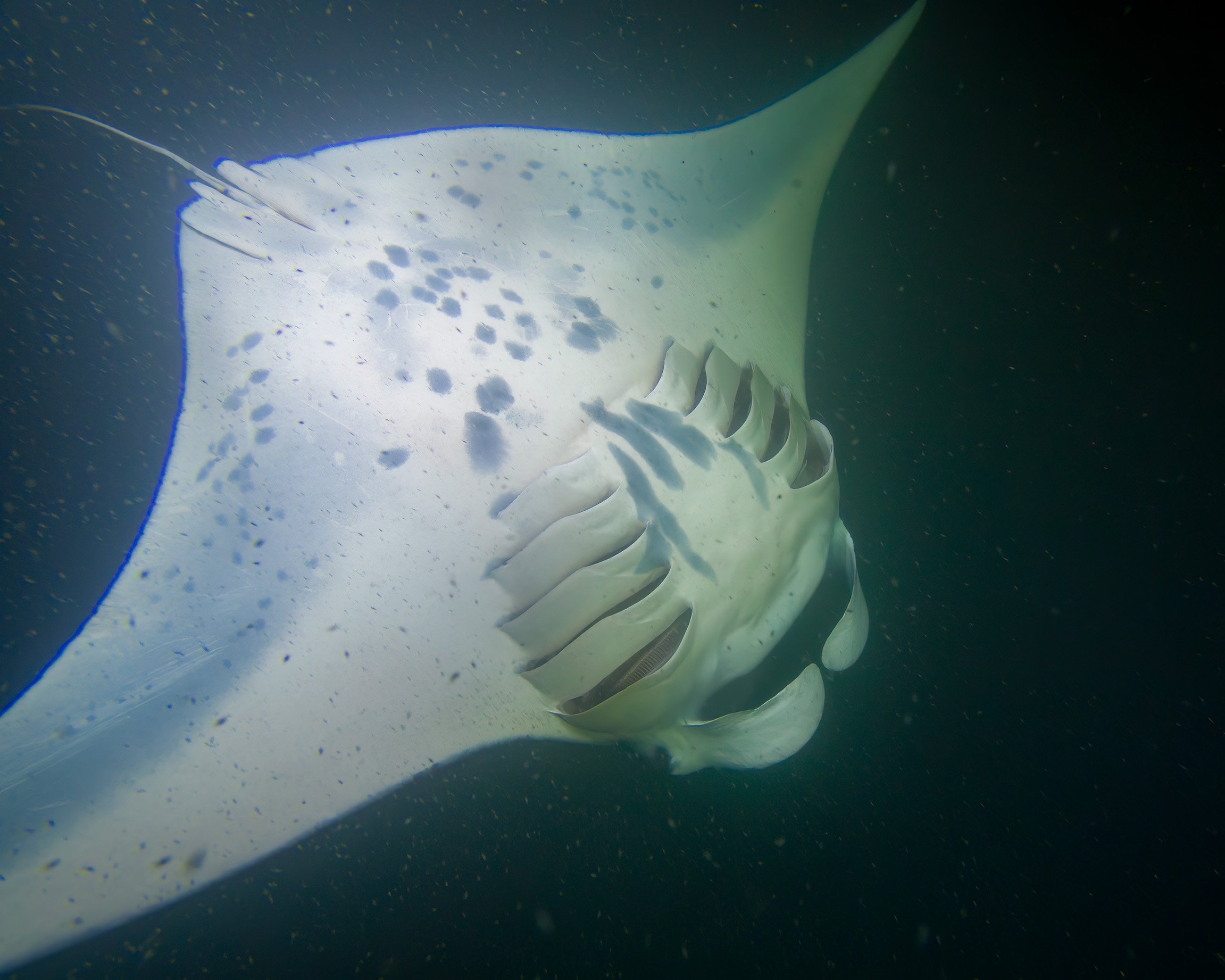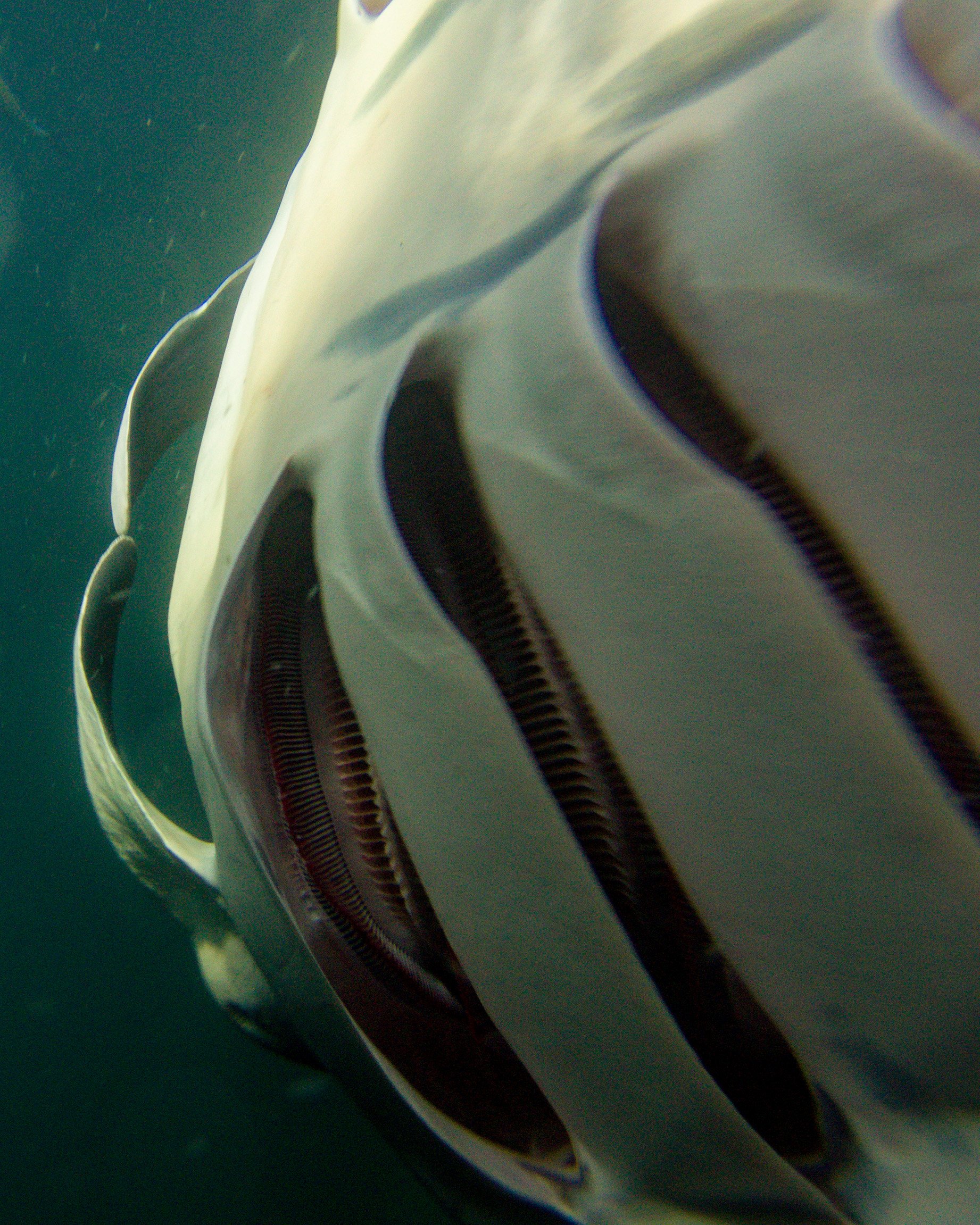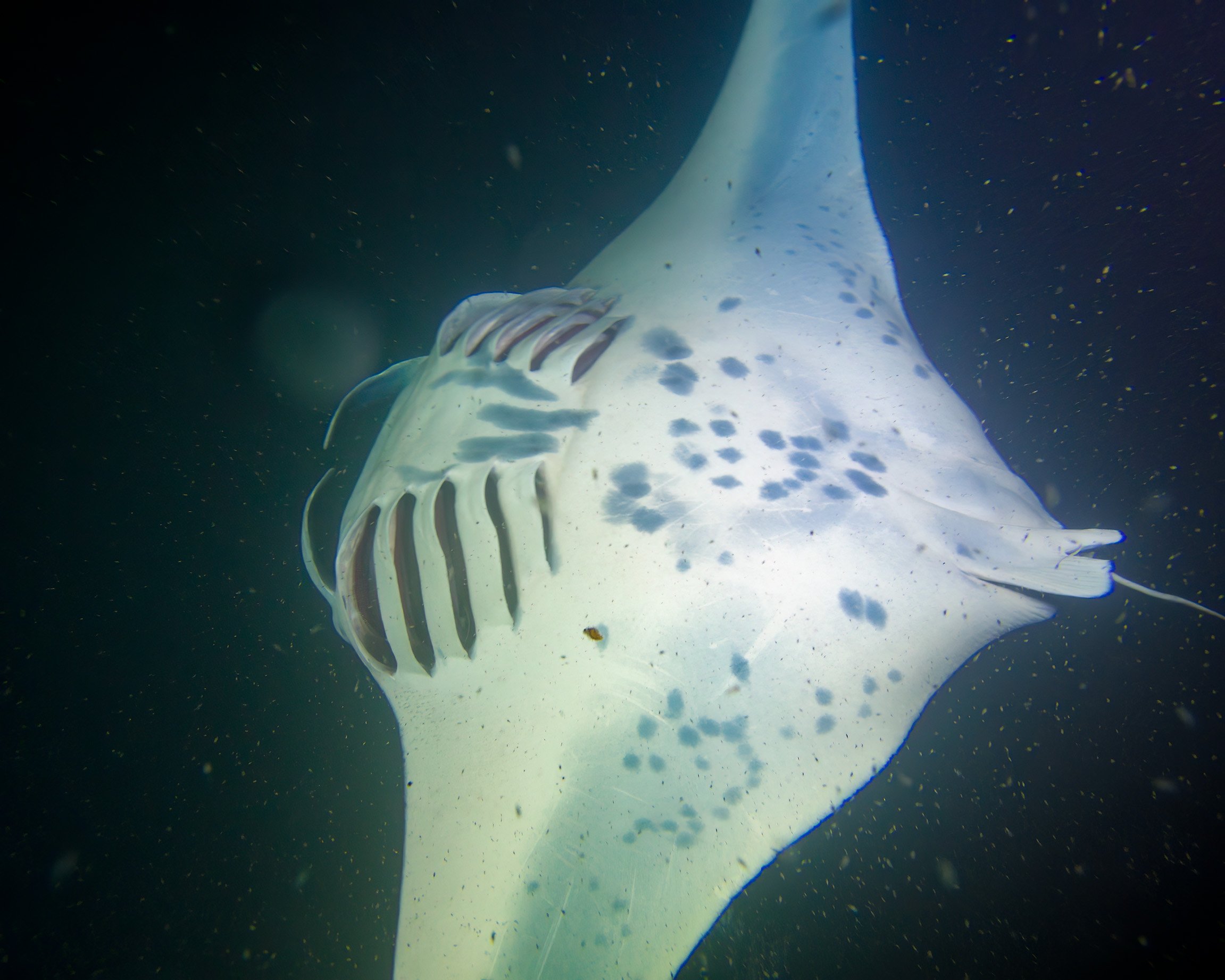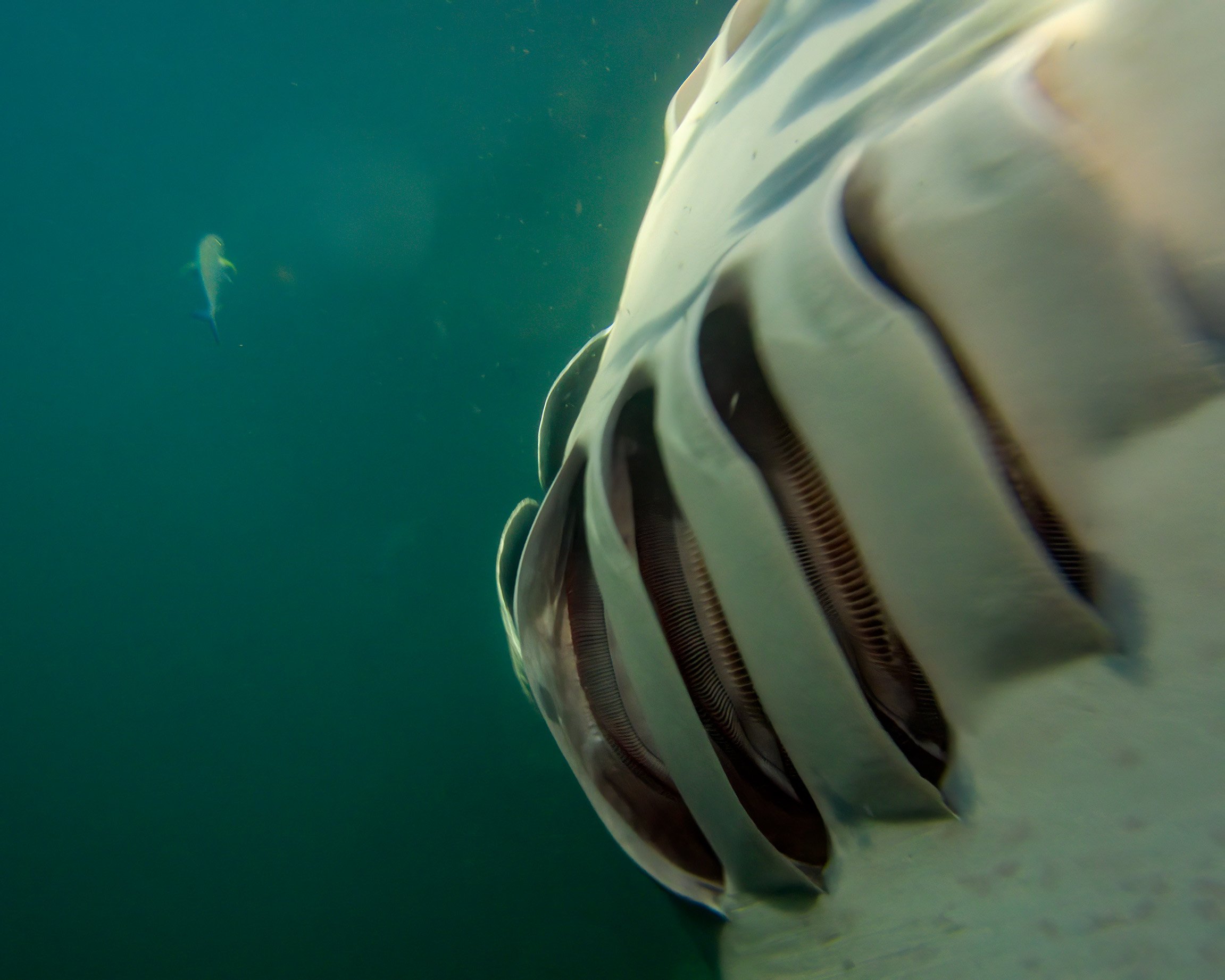Incredible Manta Rays off the island of Hawaii
They look like machines, not like animals, but manta rays are real and one of the most amazing wildlife experiences I’ve ever had.
As part of our Uncruise aboard Safari Explorer in the Hawaiian islands, we had an excursion with Blue Wilderness Tours out of Kona. There are several options for night snorkeling with manta rays, but this outfitter was selected by our Uncruise expedition leader for a private excursion.
We were outfitted with wetsuits, not because the Pacific Ocean is any colder at night than when we are folicking in it during the day, but observing manta rays requires sitting still for 30 minutes in the dark water, and it can feel chilly.
Squeezed into out wet suits, we are ready to explore the ocean at night
As we board our skiffs, and head to the snorkel spot, we see an eerie yellow green glow emanating from the bottom of a specially tricked out surf board. We get our masks and snorkels in place and slip into the inky ocean. Tonight, we won’t wear fins since about 6 or 8 of us will be hanging onto a surf board outfitted with a powerful light directed down into the ocean, and we don’t want to be either kicking each other or the manta rays we came to see!
As I slip into black water, I have a moment of anxiety. The water does feel colder than any of the beaches I was on earlier, even though it’s not, but I feel cozy in my wetsuit. I’m always aware that the ocean is a wilderness, but being surrounded by water filled with unseen wildlife when I can only see what’s in the small pool of light under the surfboard is unnerving.
And seeing what IS there seems to only heighten my anxiety; tiny, translucent zooplankton, the worlds simplest animals are teeming in the light. My skin starts crawling thinking that I am swimming among these tiny creatures, each one shaped and moving in a unique way. Larger sea worms with hundreds of legs propelling it around the ocean swim within inches of my mask. I fell like I need a immediate shower to rinse these plankton out of my bathing suit!
Millions of plankton, visible and microscopic live and swim in the ocean. All of these specs are individual animals (or plants) that move around the ocean feeding on light or smaller plankton also attracted to the light!
Our hope is that the manta rays will be attracted to the plankton and join us to feed under the lit surf board, completely unbothered by us watching from above. In a sense we are “feeding” the mantas by painting light in the areas where we are to attract the plankton! All of these creatures were in the sea during the day when I was I swimming in broad daylight, but I just couldn’t see them. So I took a deep breath through my snorkel and concentrate on the marvel of this undersea world seldom ever see! I concentrated on how each of these tiny creatures moved themselves through the water…some with tiny frilling fins, others by expelling water, some with thousand of cilia gently tickling the water. Within minutes, I’m relaxed and fascinated by the diversity of the life in front of my mask!
During the day I snorkeled with all the same creatures, but it took the concentrated light and dark ocean to really see them all! (snorkeling at the wharf in Maui)
Once my heart rate settled and I started marvel and appreciate the undersea world around me, we were treated to the “main event”. Within a few minutes a large male manta ray, began feeding under the surf board. I was struck by how they look more like machines, not like animals, but manta rays are real and one of the most amazing wildlife experiences I’ve ever had.
They swim by gracefully moving their large wing like fins. They use smaller fins near their mouths to move plankton into their mouths, and as they loop through the water, rolling over and over again, plankton rich water passes through filtering gills that make them look more like a robot vacuum than a relative to sharks.




We learned from our guides, that manta Rays are mobula, related to sharks but also, like whales in that give birth to live young, and filter feed. Although their pups will nurse inside the female manta, they are independent immediately after being expelled during birth, where whales will stay with and nurse their young externally for many months.
Each ray is identifiable by the markings on its underside and they can be as large as 24 feet wide at their wingspan. The ray that visited us was about 14 feet wide, massive, and breathtaking to watch as it looped over and over again under the surf board filling its gills with water.
During our half hour observing the ray, we witnessed it’s ability to use it’s senses to come within inches of our bodies and never touch us, it was the most incredibly graceful animal, looping over and over again under our surf board often just inches from our masks.
Despite my initial freak out about being in the cold, dark water with all kinds of creepy swimmy things, observing a huge manta ray feeding in the wild, unconcerned about us floating above it, I knew I was experiencing something very special and I was truly engaged every minute. I was just hoping it would continue to stay and feed for us to watch!
After our half hour was up, we removed our masks and snorkels and clambered back aboard our skiff and went back to the Safari Explorer, where the very first thing I did was have a shower!!
Manta Pacific is a non profit research organization that keeps track of the mantas and has named many of them and does research and conservation. There’s also a Manta Research center near the Sheraton Hotel in Kona that welcomes visitors.
Written by Kathy Klofft
Photography and Videography by Jeff Klofft
The Mantas are completely silent, any sound you hear in the video is the sound of the camera bumping into the surfboard. Youtube link to Manta Video





